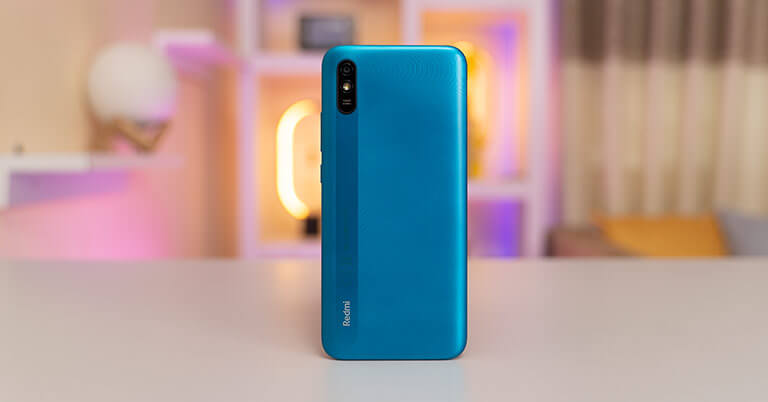
Budget phones these days are nowhere near what they used to be, say about 5 years ago. Even with the most minimum of investments, you can take home a good-looking and a well-performing smartphone. We already know how synonymous the company Xiaomi and the phrase ”value-for-money” products are. And today, I have the new Redmi 9A with me which is one of the cheapest smartphones the company currently sells. Launched for Rs. 11,499 here in Nepal which nets out to around $95, how good is this device? Let’s find out more in this review of the Redmi 9A.
Redmi 9A Specifications:
- Body: 6.49 x 3.03 x 0.35-inches; 196gm
- Display: 6.53-inches IPS LCD panel; 400 nit brightness; 88.84% screen-to-body ratio; 269 PPI
- Resolution: HD+ (1600 x 720 pixels); 20:9 aspect ratio
- Chipset: MediaTek Helio G25 (12nm mobile platform)
- CPU: Octa-core 2.0 GHz Cortex-A53
- GPU: PowerVR GE8320
- RAM: 2GB LPDDR4x
- Storage: 32GB eMMC 5.1 (expandable with a dedicated microSDXC slot)
- Software & UI: MIUI 12 on top of Android 10
- Rear Camera: 13MP f/2.2 lens; Single-tone LED flash
- Front Camera: 5MP, f/2.2 lens
- Security: AI Face Unlock
- Audio: Speakers, 3.5mm headphone jack
- Connectivity: Dual SIM (Nano-SIM), WiFi 802.11 b/g/n, Bluetooth 5.0, GPS with A-GPS/GLONASS/Beidou, micro USB 2.0, LTE
- Battery: 5000mAh with 10W charging
- Colors: Granite Grey, Sky Blue, Peacock Green
- Price in Nepal: Rs. 11,499 (2/32GB)
Redmi 9A Review:
Design
- Polycarbonate build material
- Slight weight imbalance
Starting with the design, Xiaomi has once again blessed the market with a really attractive budget phone. While its predecessor the Redmi 8A had a gradient design with the rear camera module and a distinctive strip at the center, things are a little different on the 9A. Here, you’re getting a uni-tone design where the camera module and its reflective vertical strip have been shifted to the left. Personally, I’m fond of this design choice – looks quite neat. Available in either Granite Grey, Peacock Green, and Sky Blue color options, as you can see, the latter is what I have with me.
The phone has a polycarbonate body and feels surprisingly good on the hands. Its rear panel features a ridged surface that holds up nice. The surface doesn’t attract fingerprints or smudges in any major way but I do have to warn you that small dust particles can get stuck between the ridges which are a little hard to get rid of. For this reason, I would suggest you get a decent case for the phone.
Fashionable device
Moving to the buttons & ports, the Redmi 9A covers all the sides with something. At the top is a 3.5mm headphone jack while the left frame holds the SIM tray. Similarly, you’ll find the volume rockers and the power button on the right alongside a micro USB port and the speaker grille at the bottom. Yep, Xiaomi has downgraded the Type-C connection from the Redmi 8A to a dated micro USB on the 9A which is a major bummer. All in all, the Redmi 9A is a fashionable and very well built device. The weight distribution is a little uneven with the bottom half of the phone feeling a little heavier, but that doesn’t really matter.
Display
- 6.53-inches HD+ IPS LCD panel
- No protective glass of any kind
- Wildly color inaccurate
In the display side of things, you’re now getting a bigger 6.53-inches IPS LCD panel. It’s still an HD+ display so the sharpness is definitely not gonna blow you away. Clocking 400 nits of typical brightness, Redmi 9A has no visibility issue indoors or cloudy outdoors. However, during my review, trying to get through Redmi 9A under direct sunlight was a struggle. The phone is also TUV Rheinland Low Blue Light certified to protect your eyes from prolonged exposure to its blue light.
Even with all this, Xiaomi has made a lot of cuts in the display front on the Redmi 9A. First off, the Corning Gorilla Glass 5 protection that we were impressed with on the Redmi 8 series is gone now. Yep, this phone doesn’t have any form of protective glass so that’s going to be worrisome to many. Furthermore, the display itself just isn’t that good – even for an HD+ panel on a budget phone.
Noticeable color imbalance
To start things off, it has a terrible color accuracy. Even in the default recommended settings, you’ll notice a slight greenish tint throughout the panel and everything looks unnatural and overly cinematic. This is most noticeable when watching videos where the content’s lighting scheme feels way too off if you’ve already watched the same video on some other display. And I’m not saying its color accuracy is inferior to an OLED or an AMOLED panel. The regular HD IPS LCD panels on other phones are enough to pin it down.

You can tweak around the color scheme but ultimately, Redmi 9A can’t deliver an acceptable level of color accuracy. Red, Pink, and Yellow are a little under-saturated at times while White has a more creamy and silvery finish to it. As expected, the sharpness isn’t that great and the contents on the screen (especially videos) look blurry and distracting if you’re used to an FHD or a QHD+ display. This could be a result of a larger display and a thin pixel density of just 269 PPI.
Performance
- Octa-core MediaTek Helio G25 SoC (12nm)
- 2GB LPDDR4x RAM and 32GB eMMC 5.1 storage (expandable)
- MIUI 12 on top of Android 10
Getting into performance, Redmi 9A is powered by the new Helio G25 chipset from MediaTek. Manufactured under the 12nm process node, it is gaming-oriented silicon with and a 64-bit octa-core CPU with all eight Cortex-A53 cores clocked at 2.0 GHz. Handling the graphics on this phone is the IMG PowerVR8320 GPU clocked at 650 MHz. With these, the Redmi 9A should outperform the Snapdragon 439 found in its predecessor even though by just a little bit.
Gaming
Because it has a gaming SoC, let’s discuss the gaming performance first. I tried out a bunch of taxing and lightweight games on the Redmi 9A during my review and got a mixed experience which mostly leans on the bad side of things. PUBG Mobile was pretty much unplayable even in Smooth graphics and Low frame rate with constant stutters.

So, I switched to its Lite version instead, and here, the game was well playable when meddling through the graphics settings. PUBG Lite can practically push through HD graphics and Extreme frame rate but I wouldn’t suggest you do so since the gameplay will be very laggy under these settings. Instead, I got a relatively smooth performance when switching it down to Balanced graphics and High frame rate.
Likewise, COD Mobile is maxed out at Low graphics while the frame rate can be bumped to High. You are also locked out from changing other settings like anti-aliasing, graphic style, etc. Under the High & Medium frame rate, the gameplay is filled with heavy stutters though it was a little bearable when tuning it to Low. Furthermore, all these FPS games have this fringy and aliased graphics and even the touch response would give up sometimes – but rarely. The phone also heats up after about 10 minutes of gameplay.
What about light games?
Moving to lightweight games, I tried out Clash Royale, Frag, and Bowmasters. Clash Royale ran smoothly with no issue and the same goes for Bowmasters. However, there were a few instances of stutters on the latter. Similarly, Frag is also playable though I’d advise against setting the graphics to High. Considering everything, Redmi 9A’s gaming prowess is quite admirable though Xiaomi could push an update for the issue of frequent stutters.
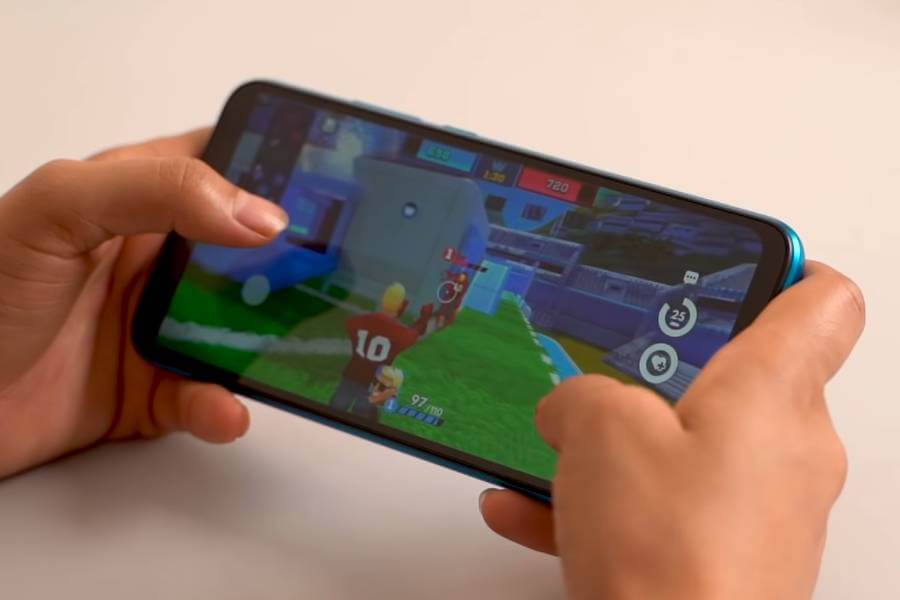
When it comes to normal usage, it is… fine. Redmi 9A has a single memory configuration with 2GB of RAM and 32GB of eMMC 5.1 storage. It runs on the full-fledged MIUI 12 on top of Android 10. But that memory confinement is a big let down which is reflected in the phone’s performance. A mere 2GB of RAM on a phone running one of the heaviest (if not THE heaviest) Android skins is not a good combo.
MIUI 12
Because of this, my experience with the phone was quite laggy. The extent of MIUI 12’s load is also explored on the system memory Redmi 9A occupies. Out of the 32GB, the system alone devours around 7.25GB which I feel is too much for a phone of this stature. To prevent all this, Google is stepping up by having OEMs from ship phones with 2GB RAM or less with a modified Android Go Edition instead – starting with Android 11. Seeing how Redmi 9A has turned out, I wholeheartedly agree with Google’s decision.
Having said that, using regular apps like Facebook, YouTube, Messages, etc. and even multitasking among them is fine. But that’s not gonna be the case when bringing in a few games into the mix. I’m a sucker for Android 10’s gesture navigation and when pulling up the list of apps in RAM, there is a noticeable lag almost every time.

You will get ads on this thing, yes but not something that totally ruined my time with the phone. Unlike how many have pointed out that they receive lewd ads on their different MIUI devices, all the ads I got were of one VPN app throughout my time with the device. Maybe Xiaomi has listened to all the backlash from the community.
In terms of pre-installed apps, I was quite surprised to see Google Phone, Messages, and Chrome instead of their Xiaomi alternatives. There are also a few bloatware apps & games but you can uninstall most of them including Mi Community. The phone just launched in India today, and for our Indian audience, you don’t need to worry about government-banned apps on it since Xiaomi just rolled-out a refined version of MIUI 12 for the country without any of the banned apps.
Camera
- Rear: Single 13MP f/2.2 lens
- Front: Single 5MP f/2.2 lens (teardrop notch)
Let’s talk about the camera now, shall we? It has a single 13MP lens at the back and a 5MP front camera inside the teardrop notch. With ample light, the images from the primary lens are quite good.
Normal Images
They are well detailed and the color-reproduction is fairly accurate albeit it leans on the under-saturated side.
The dynamic range isn’t that great as the white balance on sky and such is pretty terrible – which has been the case with many budget and mid-range Redmi phones.
HDR & Pro mode
Turning on HDR does help a little bit with the dynamic range but oversaturates the images in the process. This is especially noticeable when shooting images in close range though landscape photos turn out quite pleasing to look at. It takes around 2 – 3 seconds to process so if your hands aren’t adequately still, images might come out blurry.
There’s also a “Pro” mode that lets you play around with ISO, White Balance, Exposure, etc. The camera UI is simple to use and it even has the Google Lens integration.
This lens also has AI scene detection which recognizes things like flowers, buildings, scenery, etc. and optimizes the image. But most of the time, all it does is over-saturate the primary colors in the shot. There’s also the beauty mode and filters using which you can give your image a different color tone at the time of the shooting.
Portrait & Selfie Images
You can also take portrait shots using both front and rear camera but the edge detection isn’t that great as it misses out on the bokeh effect in many sections of the subject.
Moving to the selfie images, they’re OK for the price, I guess. However, images end up looking pale and lifeless at most times. If there’s ample light, it takes acceptable selfies with a good focus on the subject.
Also, Redmi 9A supports Face Unlock which takes at least a second to unlock the phone when it accepts your face. But around 30 – 40% of the time, the phone fails to recognize altogether.
Nighttime Images
Like it is with every budget phone, this one doesn’t have a dedicated night mode either. As a result, shots in the dark are way too grainy, with terrible sharpness. Should there be some decent lighting in the environment, the photos will turn out to be somewhat acceptable.
In terms of videos, Redmi 9A tops out at 1080p/60fps from the main and 1080p/30fps recordings from the front camera. The videos from the main sensor look eerie and over-sharpened. Also, you can shoot time-lapse and a 15-second short video on this phone.
Battery
- 5000mAh battery with 10W charging
- Micro USB 2.0
Powering the phone is a massive 5000mAh battery. This is easily a 2-day device under light and medium usage which was reflected well during my review period of the Redmi 9A. There’s also an “Ultra Battery Saver” mode which is similar to Samsung’s “Maximum Power Save” mode which confines you to the most basic of tasks on the device.
But charging the phone is a pain as it only supports 10W wired charging via a micro USB cable. This is a major setback considering how the Redmi 8A supported 18W fast charging and had a USB Type-C port. With this, it took me about 2 hours and 50 minutes to fully charge the phone from 0 to 100%.
Audio
- Bottom-firing speaker
- 3.5mm headphone jack
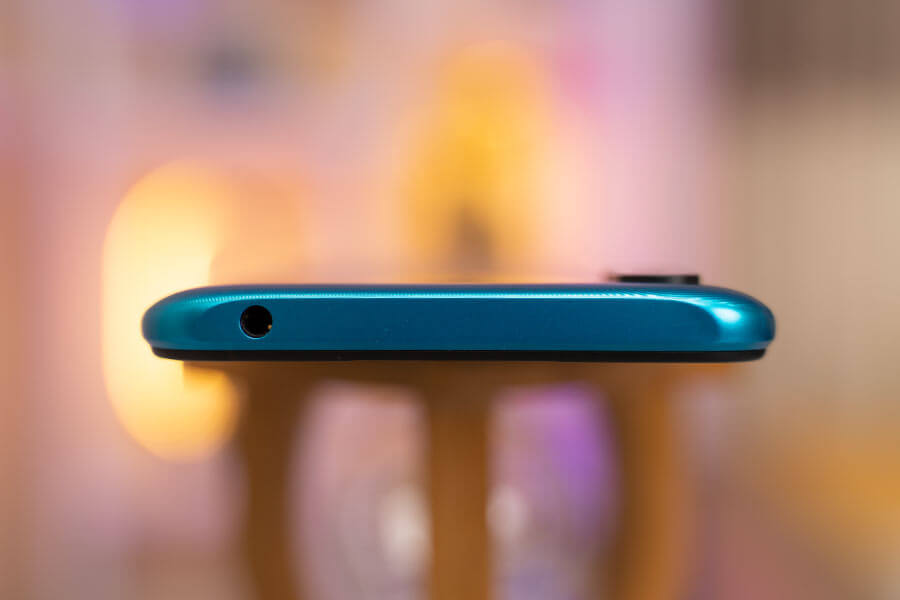
When it comes to audio, Redmi 9A has a single bottom-firing speaker and its output is decently loud and sharp. However, I felt that the sound quality is quite shallow and has a shrieking feel when maxing out the volume. The audio from the headphone jack, however, is pretty decent though it doesn’t get loud enough. Call quality is equally great and I received no complaints regarding my voice or sound level – and neither was there any call-drop issue.
Conclusion
To sum it all up, the Redmi 9A is an okay phone for the price as we’ve discovered throughout this review. Compared to its predecessor the Redmi 8A, I don’t understand why Xiaomi decided to compromise such crucial aspects like the Gorilla Glass 5 protection and a faster charging via Type-C. The HD+ display would’ve been fine had the company worked on better color accuracy. Despite this, Redmi 9A is a decent value for money with acceptable gaming performance and cameras. Likewise, the battery life on this phone is really amazing which will easily last you a day even with the heaviest of workload.
- Watch our unboxing & video review of Redmi 9A!
Redmi 9A Review: Pros & Cons
Pros:
- Great design and feels good on the hand
- Excellent battery life (2-day phone)
- Exciting gaming probabilities with the Helio G25
- Decent camera performance under sufficient lighting
Cons:
- The display has a terrible color accuracy
- 2GB RAM is insufficient for the full-fledged MIUI
- Occasional ads can be witnessed
- No protective glass included
- Slow charging via micro USB connection











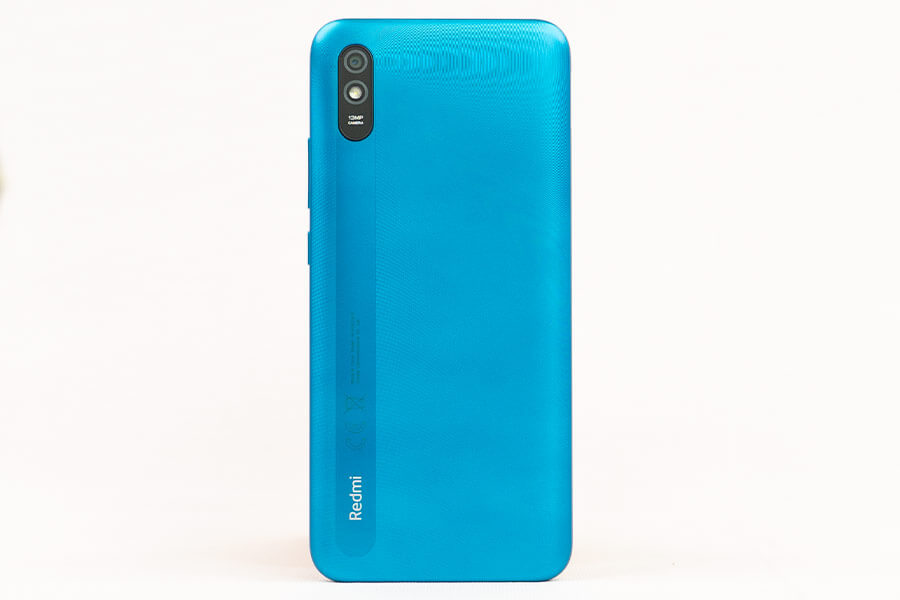
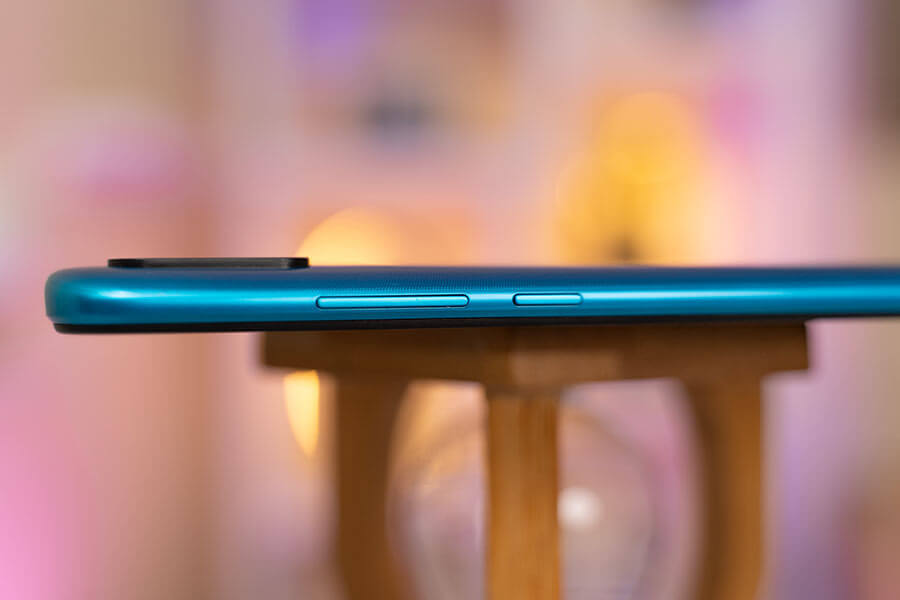
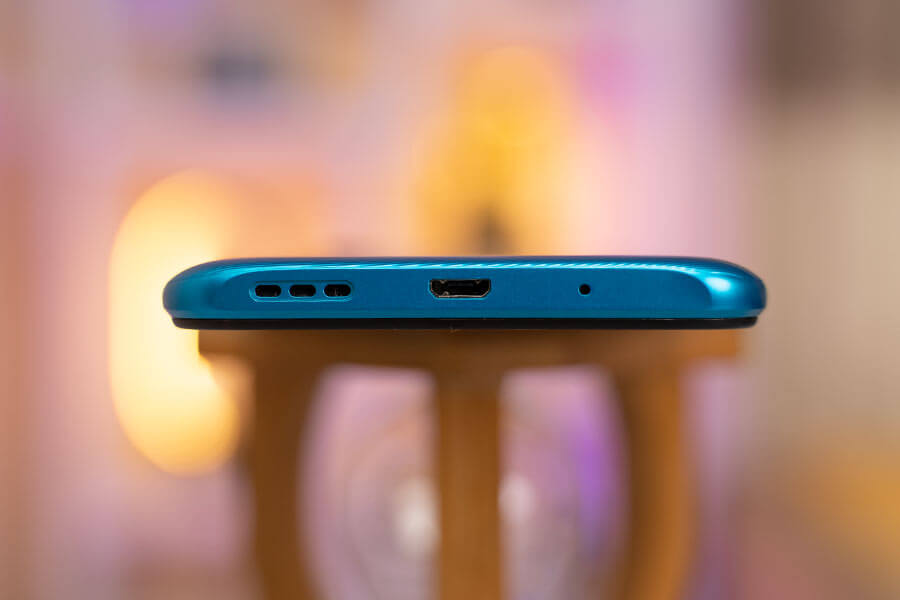


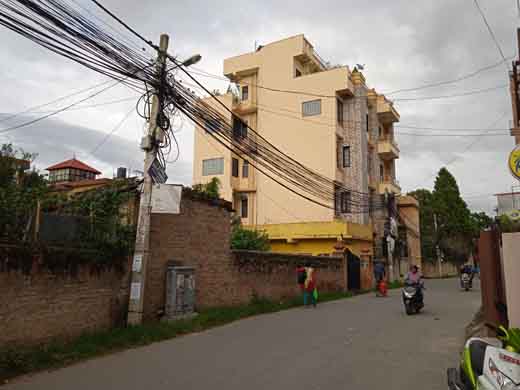
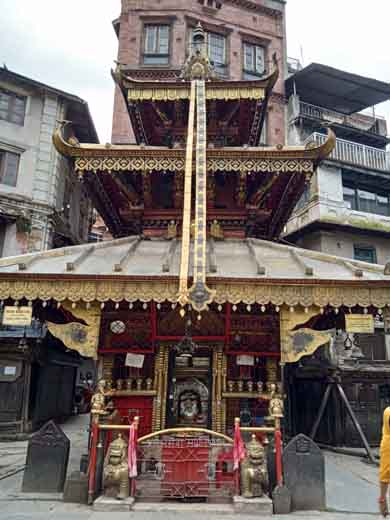
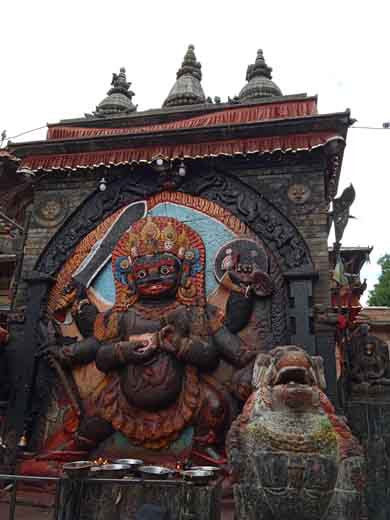






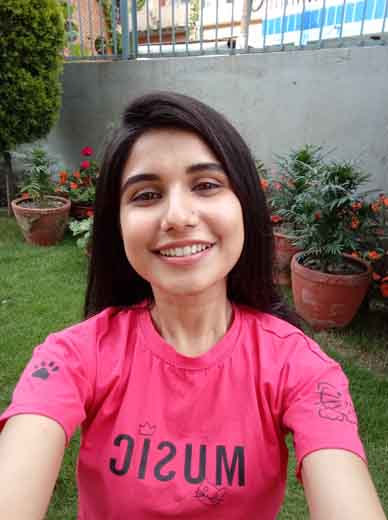


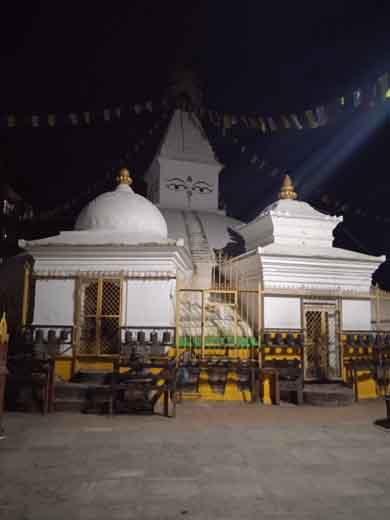





![Best Ultrabooks To Buy in Nepal 2024 [Updated] Best Ultrabook Laptops in Nepal 2023 - June Update](https://cdn.gadgetbytenepal.com/wp-content/uploads/2023/04/Best-Ultrabook-Laptops-in-Nepal-2023-June-Update.jpg)
![Best Gaming Laptops in Nepal 2024 [Updated] Best Gaming Laptops in Nepal 2023 - June Update](https://cdn.gadgetbytenepal.com/wp-content/uploads/2023/04/Best-Gaming-Laptops-in-Nepal-2023-June-Update.jpg)


![Best Mobile Phones Under Rs. 15,000 in Nepal [Updated] Best Phones Under 15000 in Nepal 2024 Budget Smartphones Cheap Affordable](https://cdn.gadgetbytenepal.com/wp-content/uploads/2024/03/Best-Phones-Under-15000-in-Nepal-2024.jpg)
![Best Mobile Phones Under Rs. 20,000 in Nepal [Updated] Best Mobile Phones Under NPR 20000 in Nepal 2023 Updated Samsung Xiaomi Redmi POCO Realme Narzo Benco](https://cdn.gadgetbytenepal.com/wp-content/uploads/2024/01/Best-Phones-Under-20000-in-Nepal-2024.jpg)
![Best Mobile Phones Under Rs. 30,000 in Nepal [Updated]](https://cdn.gadgetbytenepal.com/wp-content/uploads/2023/12/Best-Phones-Under-30000-in-Nepal-2024.jpg)
![Best Mobile Phones Under Rs. 40,000 in Nepal [Updated] Best Phones Under 40000 in Nepal 2024 Smartphones Mobile Midrange](https://cdn.gadgetbytenepal.com/wp-content/uploads/2024/02/Best-Phones-Under-40000-in-Nepal-2024.jpg)
![Best Mobile Phones Under Rs. 50,000 in Nepal [Updated] Best Phones Under 50000 in Nepal 2024 Smartphones Midrange](https://cdn.gadgetbytenepal.com/wp-content/uploads/2024/02/Best-Phones-Under-50000-in-Nepal-2024.jpg)
![Best Flagship Smartphones To Buy In Nepal [Updated] Best Smartphones in Nepal 2024 Flagship Premium Samsung Apple iPhone Xiaomi OnePlus Honor](https://cdn.gadgetbytenepal.com/wp-content/uploads/2023/09/Best-Smartphones-in-Nepal-2024.jpg)